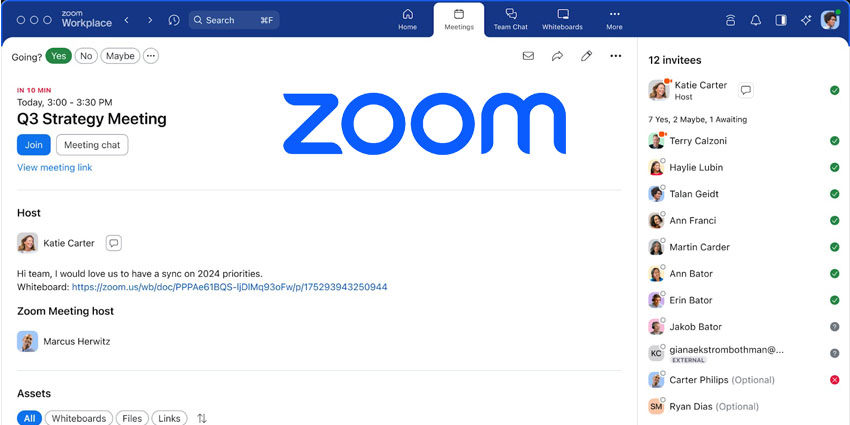Collaboration is no longer a “nice to have” component in the communication space. As the workplace continues to evolve, and conversations become more dispersed and complex, collaboration is a critical part of bringing the transforming workforce together in a lucrative way. They help to connect remote workers, ensure that service agents have the right support to serve customers, and give companies the guidance they need to get ahead in a competitive market.
To discuss the nature of team collaboration and how it’s changed over the recent years, we caught up with the Product Marketing Manager for digital innovators Alcatel-Lucent Enterprise. has been working as a marketing manager for real-time communications in the ALE brand for about ten years now, and before that, he was a team leader for R&D system architects exploring the concept of real-time networks. In other words, he has plenty of background in the space. I was keen to get his insight into how the communication conversation is changing.
What Makes Rainbow Different in the Team App Space?
 Alcatel-Lucent Enterprise launched their “Rainbow” service around two years ago now, making them a relatively early innovator in the team collaboration space. According to Jean-Francois, the company has a long history of on-premise UC solutions thanks to their OpenTouch service. However, in recent years, the company began to see increasing demand from customers for more cloud-based team collaboration apps that can offer a greater level of functionality.
Alcatel-Lucent Enterprise launched their “Rainbow” service around two years ago now, making them a relatively early innovator in the team collaboration space. According to Jean-Francois, the company has a long history of on-premise UC solutions thanks to their OpenTouch service. However, in recent years, the company began to see increasing demand from customers for more cloud-based team collaboration apps that can offer a greater level of functionality.
“UC applications have been around for a long time. While we could do on-premises before, it required a lot of IT investment from our customers, with insight into session border controllers and things like that. That meant that team collaboration was really only something that early adopters and people with strong IT departments could do.”
“Now, there’s a lot more flexibility in the things that are available. One particular difference is that the group chat and instant messaging feature has emerged as the primary application that people want to see today – compared to traditional UC where everyone was looking for a software phone.”
While Rainbow still allows customers to have control over their phone PBX, it also offers the additional collaboration features that modern customers are searching for too – like video and instant chat.
How Do You Think Team Collaboration Has Changed?
Team collaboration is a huge concept in the modern marketplace, thanks in part to digital transformation and the arrival of super-fast internet. We have WebRTC, over-the-top applications, and countless other things that help the collaboration journey to come together more efficiently. According to ALE and Jean-François, one interesting evolution is the fact that team collaboration apps are becoming more appealing to the mid-market and small business segments.
“In my discussions with customers, I’ve been really amazed at how many people are interested in smartphone and video capabilities. I thought before that video was most popular for conferences and huddle rooms, but now people are using it to talk to their coworkers and external business contacts. Many of them are using video and file sharing between people that are on customer-premises and back-office experts who are at their desk. It saves them a lot of time as they can do what they have to do in a single visit.”
“Almost all the customers I interview say that what they really like with Rainbow is our WebRTC video capabilities that can go through their firewall.”
Rey told me that there hasn’t just been a change in technology, but a change in the way that businesses complete their daily tasks in general. Another key area of interest that ALE has seen with their Rainbow solution, is that customers appreciate how easy it is to reach people outside the company with their collaboration apps too – something that is possible with existing UC technology but is hard to set up. before.
Do You Think That Generational Changes Play a Big Part Here?
Millennials make up a significant part of the global workforce these days. Young generations want their user experience to be perfect, intuitive, and cloud-based. With that in mind, I asked Jean-François whether he sees this as a key driver towards new team collaboration technology. He told me that he had conducted some interviews with Rainbow customers, and what he saw was that every generation, including baby-boomers, are making the same shift towards collaboration tools.
“Companies are starting to realise that if they don’t give teams the collaboration services they need, then everyone will just use the consumer apps available instead. Unfortunately, when you do that, you don’t know where your data is. You gather customer information and you don’t know where it goes.”
“Everyone, not just millennials, wants to have the same type of easy-to-use application in the customer space. But companies want to know where the data their teams exchange is. Rainbow offers simplicity and privacy.”
Rainbow and other team apps ensure that there’s no “Shadow UC” going on behind the scenes that could put security and privacy at risk. “It’s a simple as a consumer app, so no-one is tempted to use anything that they shouldn’t be.”
Where Do You See Team Applications Going?
When it comes to team applications, many companies are discussing a range of different evolutions in the marketplace, including things like wearables, AI, and more. I asked Rey where he thought the sector might be heading in the years to come. “I think there will be disruptive technology like wearables and so on, but what I saw from the interviews I did with my customers is that a lot of them are already thrilled with the Rainbow applications they have now, like video and instant meetings. Perhaps what really sets the solution apart is the fact that it’s a UCaaS and CPaaS platform.”
As a CPaaS platform, Rainbow can integrate UCaaS capabilities into the customers’ business or B2C apps.” For instance, we see Rainbow CPaaS powering the chat and instant meeting capabilities of healthcare staff management app. It’s also powering the community management engine of smartphone apps that our customers offer to their customers”.
“In the future, UCaaS might blend functionalities together in a more immersive way to provide better integration with other tools – so that UCaaS and CPaaS become more intertwined.”







